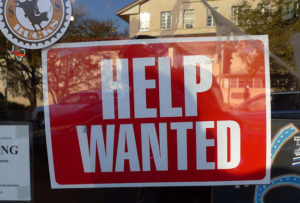As the U.S. economy transitions into a post-pandemic environment, many companies are having difficulty filling their workforce.
 A new survey published by The Conference Board found 80% companies primarily seeking industry and manual services workers have found it challenging to hire qualified workers, with 25% reporting it has been very difficult. In comparison, during the pre-pandemic period 74% of companies had the same problem, with only 4% claiming it was very difficult.
A new survey published by The Conference Board found 80% companies primarily seeking industry and manual services workers have found it challenging to hire qualified workers, with 25% reporting it has been very difficult. In comparison, during the pre-pandemic period 74% of companies had the same problem, with only 4% claiming it was very difficult.
While finding workers has been rough, retaining them is another problem: 49% of companies with mostly industry and manual services workers reported it is also somewhat or very difficult to retain workers, up from 30% before the pandemic. Among those employing professional and office workers, 28% acknowledged employee retention problems, up from 23% before the pandemic.
As for those workers who remain with their companies, many will not be found in the office ”“ 40% of companies expected a significant number of employees will still work remotely one year after the pandemic subsides.
And while nearly 60% of companies reported that productivity increased in their operations over the past year, nearly two-thirds also reported increases in employee burnout and requests for mental health support.
“During the pandemic, employees were often working longer hours in crisis conditions,” said Robin Erickson, report co-author and principal researcher at The Conference Board. “While that may have boosted productivity, that level of performance is most likely unsustainable. Deteriorated levels of employee well-being are also likely related to increased anxiety and stress resulting from multiple factors, such as the global health crisis, the economic crisis, and the lack of childcare.
“As some of these situations are resolved or stabilized and organizations make long-term decisions about a future with more remote work, they will need to continuously monitor their employee experience and holistic well-being,” Erickson added.
The survey was based on input from more than 230 human resources executives, primarily from large U.S. companies.



















